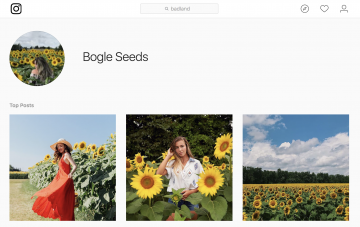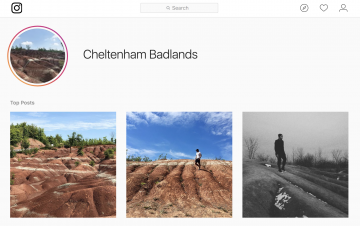Is social media disrupting the nature of conservation efforts?
Have you taken a selfie while hiking, camping, or enjoying the wilderness? Have you thought about what kinds of ecological impacts your selfie may cause? You may be thinking to yourself: “How on earth could taking a nature selfie have ecological consequences?” You may think that concepts such as information overload may only affect a person’s health and well-being, but in actuality, it may have physical impacts on the environment around you.
There are many incidents where for example, Instagram or Facebook has overwhelmed conservation sites due to Geotagging an area or tagging pictures. While these events may help business thrive economically, they can also create unsustainable and unstable environments due to an upsurge of people visiting to take Instagram or Facebook pictures. Some of these “Instagram worthy” places may come at a very high price: your life.
A rock formation in Norway, known as Trolltunga became a popular spot once it became viral on Instagram in 2015. A tourist named Kristi Kafclaoudis (24 years old) fell to her death when she tried taking a picture at the edge of the rock [1] [2].
https://www.instagram.com/p/7V91nFQLXg/
Recently, a man in British Columbia fell down a 45 metre waterfall trying to capture the perfect picture for Instagram. Luckily he survived with only minor injuries [3].
Some of these high traffic Instagram spots have also caused road closures in the conservation area. Recently in 2018, a popular sunflower farm, Bogle Seeds Farm, closed because of this. Police were called to stop traffic from entering and leaving on Saturday July 28, 2018. Although on a country road, the spillover extended to “over 7,000 cars on Highway 6 stopping it for four kilometers” [4]. Bogle Seeds, a sunflower producer where previously people visited and bought seeds instantaneously became a haven for selfie enthuses leaving their property trampled and destroyed.


Bogle Seed Farm is not alone in having their land’s conservation tampered with. In Caledon Ontario, the Cheltenham Badlands had a similar fate thanks to social networks. Again, in an overnight phenomenon the popularity of this ground site imploded, resulting in its closure for revitalization [5].
There are conservation sites and other businesses that have used Instagram and other social media platforms to intentionally promote their brand. For example, Terre Bleu Lavender Farm provides props to encourage visitors to take and upload photos on social media.
https://www.instagram.com/p/BltqHwUgNrE/?hl=en&taken-by=terrebleu
If social media sites are contributing towards these problems for conservation sites and their users, what can be done to control it? How can we protect our environment from these flash mob selfie users? How can businesses be more prepared to deal with an unexpected number of visitors?
Disclaimer: The author of this article used the images displayed under Fair Dealing of the Canadian Copyright Act, s.29.
Image Credits
teilabee (Instagram) – https://www.instagram.com/p/7V91nFQLXg/
Bogle Seeds (Instagram) – https://www.instagram.com/explore/locations/905056990/bogle-seeds/
Cheltenham Badlans (Instagram) – https://www.instagram.com/explore/locations/239740057/cheltenham-badlands/
terrebleu (Instagram) – https://www.instagram.com/terrebleu/
Further Reading:
http://theconversation.com/how-social-media-can-help-sustainable-nature-tourism-100112
https://www.nationalgeographic.com/magazine/2016/10/unplugging-the-selfie-generation-national-parks/

